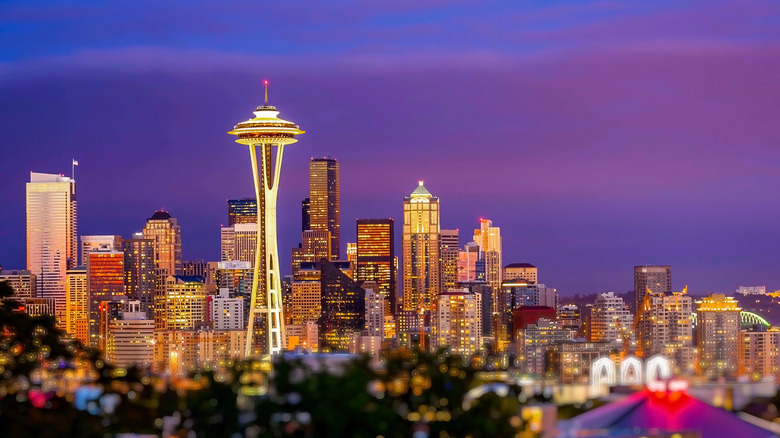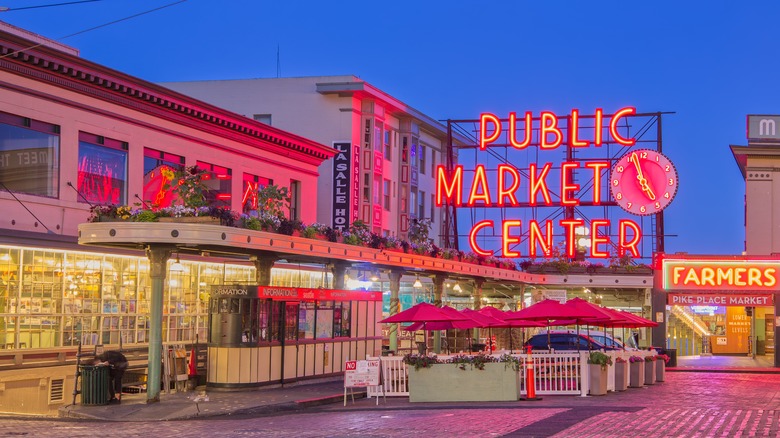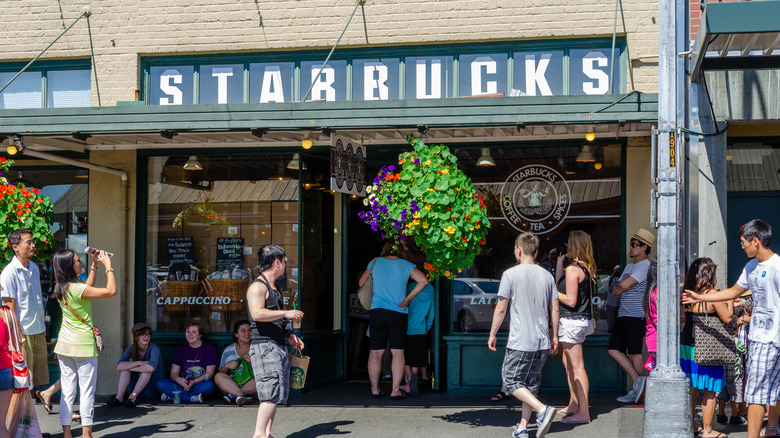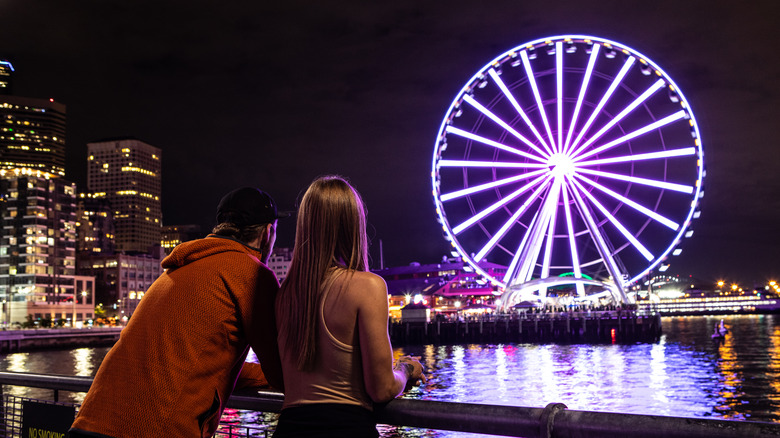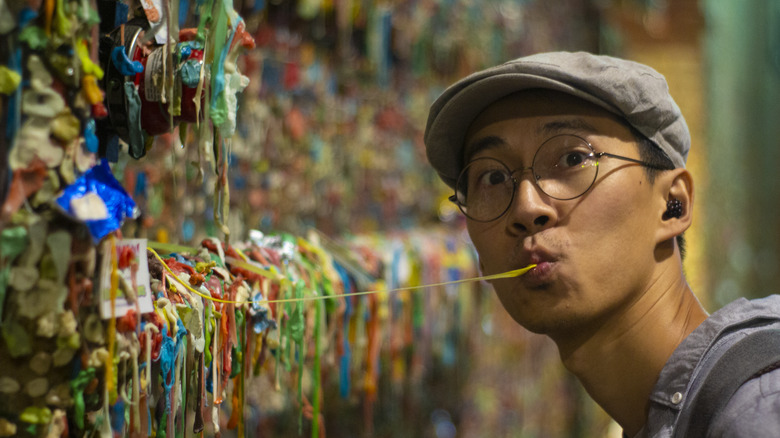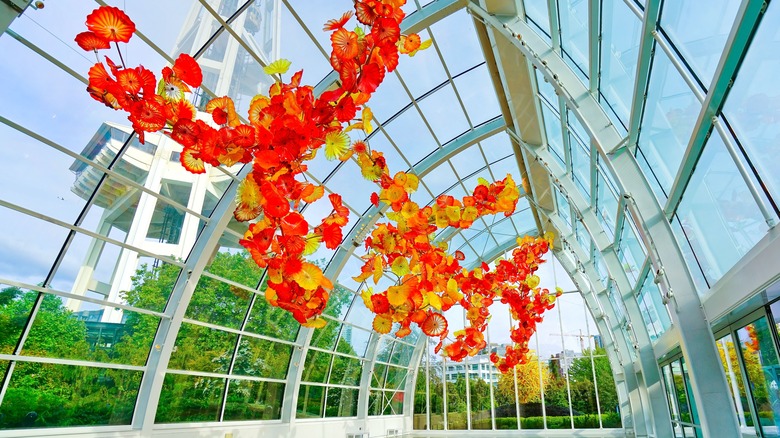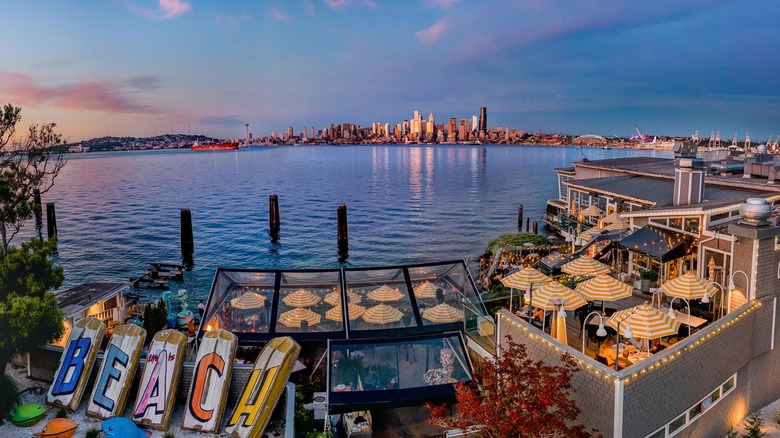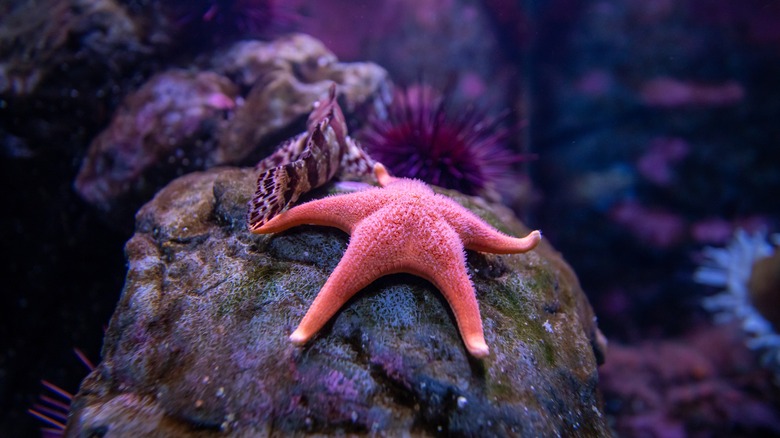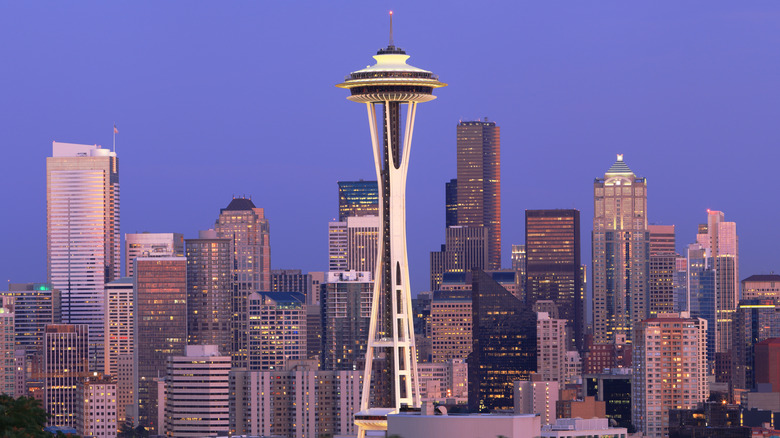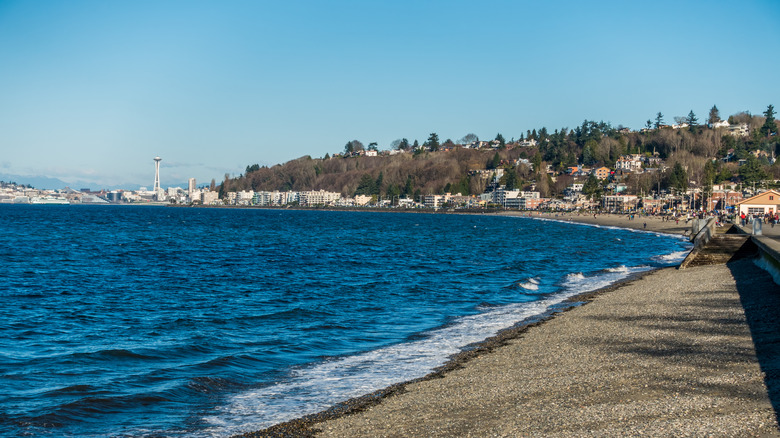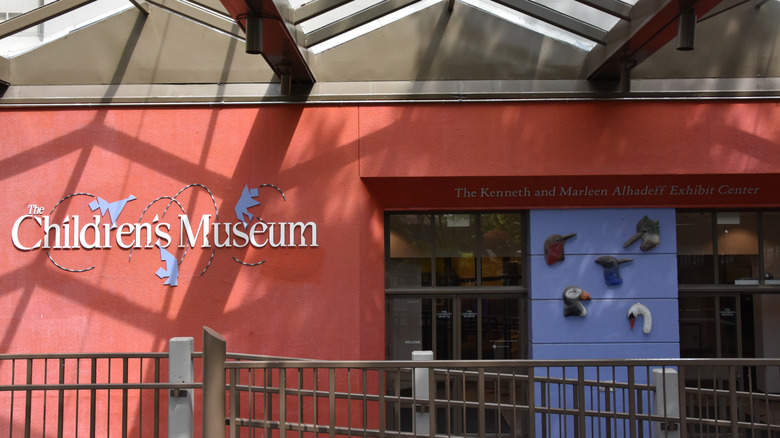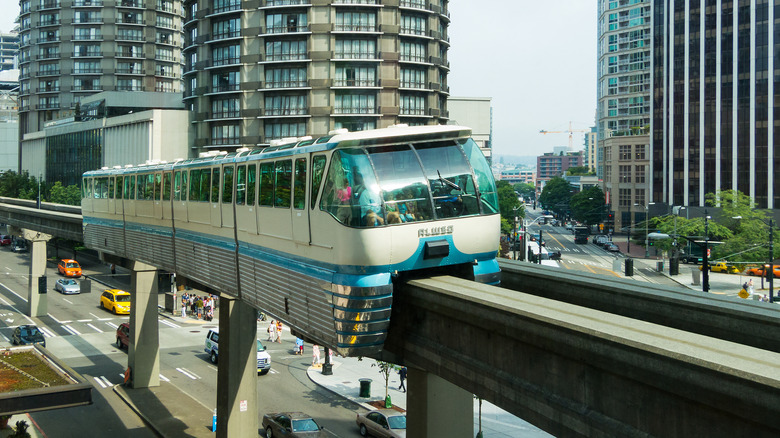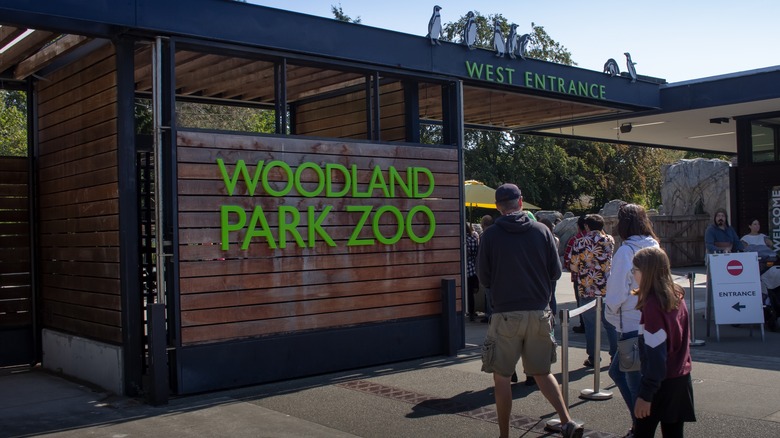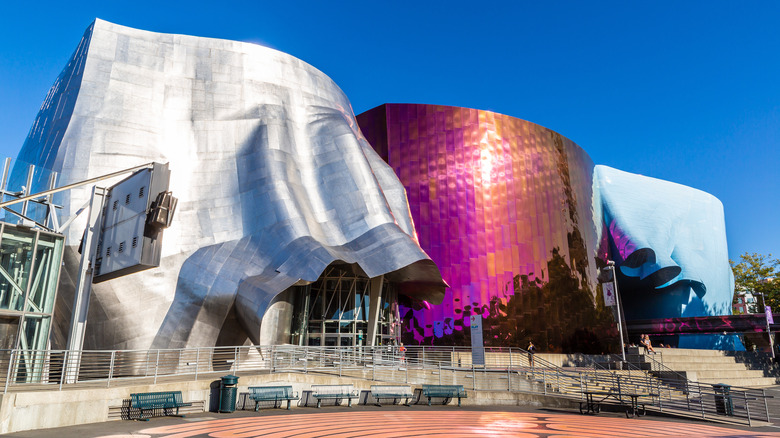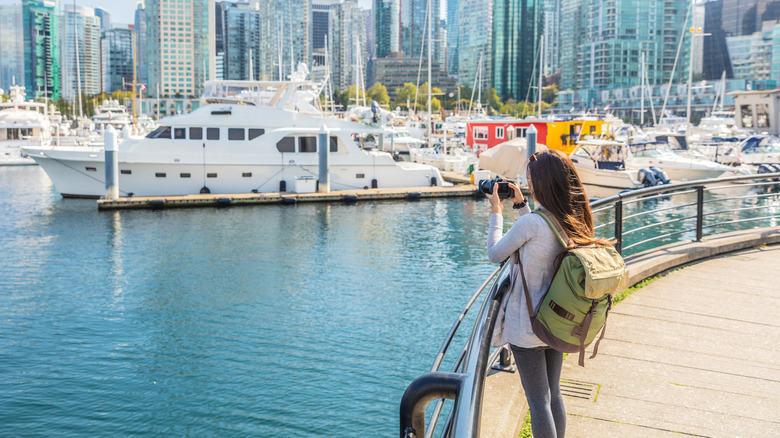Tourist Traps To Avoid On Your Next Trip To Seattle, According To Visitors
Tourist traps, usually, are places where businesses jack up their prices simply because they know how far people are traveling to get there and how much they're willing to pay. Sometimes, desirable locations are overwhelmed by visitors, becoming a different kind of tourist trap. These places are marred by excessive congestion, which taints the travel experience as much as it annoys the residents. And as in any city worth visiting, Seattle's trap sector is alive and thriving.
Overpriced tickets and overcrowded areas are dotted across the map, beckoning your wallet to open wide. Some guides may even claim that your Seattle adventure would be incomplete without seeing many of these landmarks, and there is a fair argument there. However, according to tourists and visitors via online forums and blogs, the city is packed with so much more than what the pamphlets will tell you, which is why you should use this list to pick your battles wisely. And if you cannot help yourself and are eager to check out the obvious options, be smart and get 46% off the main attractions using the Seattle CityPASS.
Pike Place Market
Whether you're looking for comic books, antiques, fresh fish, or busker entertainment, Pike Place Market has everything you want and plenty of it. Due to such an abundance of goods, Pike Place Market's reputation is no secret, and it boasts 10 million visitors annually, officially Seattle's most-visited tourist location. It's also ranked as the 33rd most-visited attraction on the planet.
Many will swear by the market as an essential visit when exploring Seattle, but manage your expectations. The immense concentration that lands upon Pike Place Market has allowed the stores to kick up their prices while a suspicious number of souvenirs are available to tempt foreigners. However, the worst consequence of this popularity is the crowds, challenging your browsing time as you try to squeeze past bodies and ignore the deafening noise. For these reasons, USA Today labeled it the 10th biggest tourist trap in the world. But if you are still keen to face the chaos and experience a slice of Seattle's history, try to aim outside the usual bustle times and visit between 9 and 11 a.m.
The Original Starbucks
While pushing through Pike Place Market, you will most likely come across this gem of coffee culture history: the Original Starbucks. Even if you do not appreciate the largest coffeehouse chain in the world, who wouldn't want to see where this monumental company initially opened its doors? Sadly, you cannot. Irrespective of what the shop or the company might tell you, this is not the genuine Original Starbucks, as they demolished the authentic location in 1976.
Sensing a lost business opportunity, Starbucks decided that a little relocation should not impact their touristic draw, and they held onto the "original" bragging point in their name despite the locals knowing the truth. Regardless, their plan worked, and coffee lovers worldwide flock here to order their caffeine and snap their selfies, unaware of the marketing ploy to which they have fallen victim. What's worse is that this unwarranted attention holds up the line and means those itching to get their buzz are forced to wait longer, even though the product is identical no matter where you go.
The Seattle Great Wheel
Reaching 175 feet into the air, The Seattle Great Wheel is far from the tallest operational Ferris wheel in the world. To give you some idea, Las Vegas' High Roller sits at a dizzying 550 feet. But when Seattle's version first opened in 2012, it was proudly recognized as the highest on the West Coast. Such an honor has fixed it as an iconic landmark of the city's terrain, and it's frequently spotted in pop culture, for example, in the Netflix film "Death Note" or the video game "The Last of Us Part II."
This elevation promises vast Seattle views, but the best visual you'll find is of the wheel itself. Its towering presence is magnificent, and if you can hang around at night, its lighting offers an impressive pop of color. However, you can experience these majestic scenes from the ground without forking over the $18 price for admission. Instead, if you crave skyline views, earn them like a local by seeking more natural (and free) environments such as the one found in Kerry Park.
The Gum Wall
Like every entry on this list, your choices are down to personal taste. So how do you feel about the taste of gum? In what is undeniably up there with America's most bizarre tourist attractions, the Gum Wall is exactly as it sounds: a wall covered in globs of chewed gum, estimated at 250,000 pieces in total. As you would imagine, such an unsanitary practice has not escaped controversy — people have left gum on neighboring buildings, and alley rats stop by to get some licks of sugar. These concerns led to a deep cleaning of the wall in 2015, but the gum reappeared almost immediately and continues to grow today.
Despite the disputes, many locals are fond of the landmark and consider it an art piece of sorts, with Washington Gov. Jay Inslee calling it his "favorite thing about Seattle you can't find anywhere else". While it may be recognized as one of the "germiest" tourist spots in the world — and in our view, one of the biggest tourist traps in the city — at least it's free!
Chihuly Garden and Glass
Dale Chihuly is a master artist in the glassblowing medium, creating dauntingly large sculptures using the technique. His pieces are so revered that the Seattle City Council permitted the man his own space, taking over where the defunct Fun Forest amusement park once stood. What materialized was an exhibition showcasing Chihuly's talents, allowing fans and newbies alike to immerse themselves in the man's unique creations.
However, with a $35 entrance fee for anyone over 13 and under 65, it is painfully overpriced, especially considering that you'll have exhausted its sights within an hour or less. For that price, you could visit different museums all day long, running out of energy long before you run out of money. Some suggestions include the Frye Art Museum, Olympic Sculpture Park, and Center on Contemporary Art, which are always free. At the same time, numerous establishments open their doors without cost on the first Thursday of every month, such as the Seattle Art Museum, the National Nordic Museum, and the Burke Museum of Natural History and Culture.
Salty's at Alki Beach
Established in 1980, Salty's list of accolades speaks for itself. The seafood restaurant has a nearly four-star rating on Yelp and has won numerous awards for its brunch dishes. It also offers some of the best views in the city, as its dining area is right on the waterfront. This praise will not surprise its customers, as the Alki Beach scenery sets it far above similar restaurants. Salty's offers fresh seafood right next to Elliott Bay itself.
Of course, such beauty does not come cheap, and this ocean location will inflate your bill one way or another. Expect to pay at least $30 a head — if you're not feeling peckish, that is. Indulging in their amazing list of entrees immediately doubles that, with prices for choice dishes hovering around $50. That's a difficult meal price to justify for any explorer on a budget. However, if money is not an obstacle, or if you only have time for one prestige dinner on the waterfront, then Salty's might be the ideal place for you, with a delicious 8-ounce filet mignon for $72 or a colossal Alaskan red king crab leg for $120.
Seattle Aquarium
If your life isn't complete without watching sea creatures swim around in confined spaces, then the Seattle Aquarium may be a must-see display for your trip. There's nothing quintessentially "Seattle" about this attraction, as not only can you find similar aquariums across the globe, but many of them are held in much higher regard. Indeed, reviews for the Seattle Aquarium are generally mixed, with numerous complaints highlighting its small size (some reviewers said they saw the whole thing in under an hour), which makes its $40 ticket tricky to justify.
The aquarium features sea otter, harbor seal, and Northern fur seal shows, as well as diver shows to showcase the inhabitants of Puget Sound. The location also has plenty of touch tanks for visitors to feel Washington tide pool species for themselves. The aquarium also partakes in some admirable conservation work. In 2020, the aquarium helped to increase the number of leopard sharks in the Indo-Pacific, and in 2021, its staff initiated a program to boost the population of the pinto abalone sea snail. Another lesser-known Seattle Aquarium activity involves experts who walk along the beach during the low tide, identifying local animals. If you're interested, you can join them by keeping an eye on the Beach Naturalists' schedule.
The Space Needle
Like the Seattle Great Wheel, the Space Needle is an iconic fixture of the city's skyline. At 605 feet, it's the tallest observation tower in Washington State, as well as one of the tallest in the country. And again, like the Seattle Great Wheel, the Space Needle offers you high panoramic views of the cityscape, which are unmatched in height and location. However, the main difference between these two elevated landmarks is the fee: a trip up the Needle, while it's higher than the wheel, costs far more, priced anywhere from $35 to $39. If that's not enough, the restaurant and gift shop at the top will do their best to squeeze every remaining dollar from you.
It's a shame because the Space Needle is stitched into the fabric of Seatle culture, recognized by generations as a defining characteristic of the city itself. For example, you may remember the tower from the title card in the sitcom "Frasier" or promotional material from the classic romantic comedy "Sleepless in Seattle." But even if you can't afford the exorbitant ticket price, at least they can't charge anyone for viewing it from the outside, as it is quite literally visible from everywhere.
Alki Beach
With its reputation for being a rainy seaside destination with a great coffee culture, Seattle easily gets lost in the shuffle of U.S. cities with beautiful beaches. Its Alki Beach comes with a rich backstory and curious sights. It was on this spot in 1851 where Seattle saw its first white settlers. They were welcomed kindly by a Native American leader named Chief Seattle, the man from whom the city takes its name. Consequently, this significant site made it the ideal place for the Boy Scouts of America to celebrate their 40th anniversary in 1950. They did so by erecting a replica of the most recognizable sculpted figure in the country, the Statue of Liberty. Despite years of vandalism, she still stands here today.
The problem with Alki Beach, however, is its popularity. It only takes one warm day for the entire city of Seattle to swarm to these 2.5 miles of coastline, meaning visitors get no elbow room, a lot of noise, and, worst of all, a perpetual pile-up of litter. Of course, during quieter hours, some may consider Alki Beach as an idyllic stretch to take your dog for a stroll. Except, unfortunately, dog-walking on sandy saltwater shores is banned to protect baby seals, and pet owners could face hefty fines for bringing their furry friends to the beach.
Seattle Children's Museum
Founded in 1980, the Seattle Children's Museum promises 14,000 square feet of exhibits to engage your child's imagination. Displays include a fake mountain, a public transportation model, and a workshop for your young ones to unleash their creativity. Another huge hit is "The Neighborhood," where children can find entertainment in otherwise mundane adult activities such as going to the doctor or the Post Office.
Reviews for the museum are positive, with four stars out of five on Tripadvisor. Many claim their children were enamored with the roleplaying opportunities and the designated zones in the museum — the more the museum draws the kids in, after all, the more the parents are let off the hook to enjoy some stress-free time. But some parents complained that the space is really just an expensive play area that is less interactive than its website claims and disappointingly small.
Some reviewers have also expressed concern about the maintenance and cleanliness of the exhibits, though these complaints are but a vocal minority. The biggest consideration for parents might be whether in 2023, their children can enjoy playtime away from their screens in an imaginative, hands-on environment. Tickets are $14 for children and adults alike, only offering discounts to seniors, members, and newborns. You're not allowed to drop your kids off and go to local shops, either, which may discourage some parents from going.
The Seattle Center Monorail
Monorails have never been the most efficient, cost-effective, or practical public transportation option, but that hasn't stopped Seattle from being one of the few cities in the U.S. to boast one. Among residents of the city, the Seattle monorail is a beloved yet controversial public transit system. It opened in 1962. With only two stations, though, the line's usefulness is debatable. From one side to the other, it's a 0.9-mile journey, which is an easily walkable distance that, when done on foot, will allow for a greater experience of the city.
The price runs $3.50 per one-way trip — a decent price for a handsome mode of transit with retro appeal, but the buses and streetcars that service the city are comparatively cheaper and have a greater diversity of routes. Intentionally cramming yourself inside an elevated carriage with other tourists to save 20 minutes of exercise or a few minutes figuring out the bus schedule does not seem like the most valuable decision unless you're keen on riding the monorail once simply to check it off the list.
Nevertheless, the transit system is far more than a niche amusement park ride, as it will zip you from Seattle Center to Westlake Center in less than two minutes. Trains come and go every 10 minutes, running from 7:30 a.m. to 9:00 p.m. most days and as late as 11 p.m. on Fridays and Saturdays.
Woodland Park Zoo
Your enjoyment of Woodland Park Zoo will depend on your preference, but like any city zoo, the experience will not be unique to Seattle. There are numerous zoos you can visit across America, and at 92 acres, Woodland Park Zoo is on the larger end of the spectrum. To its credit, the site boasts rare zoo species like Komodo dragons, snow leopards, and Assam rhinos, as well as a beautiful butterfly garden and a wide range of monkeys and apes, including orangutans and gorillas. With over 1 million visitors a year and 239 species on display, the zoo is obviously doing something worthwhile. Moreover, the zoo has various conservation programs on the go, such as helping Papua New Guinea to protect tree kangaroos and recovering assorted wildlife in the Pacific Northwest.
To the zoo's detriment, however, the ethical debate about keeping animals in captivity continues, with some tourists taking a stand against what they consider a cruel practice. Consequently, Responsible Travel ceased promoting these companies in 2017, the first tour operator to do so. But not all zoos are created equal, and many of them — especially accredited zoos like Woodland Park — go the extra mile to attempt to put education and conservation front and center while showing animals in exhibits that closely mimic their natural environments.
Museum of Pop Culture (MoPop)
Seattle is globally recognized as a pop culture leader, mainly due to its influence on the music scene. To begin with, arguably the most influential guitarist of all time, Jimi Hendrix, was born in the city. But perhaps even more significant was when the grunge movement exploded from here in the 1990s thanks to bands like Nirvana, Alice in Chains, Soundgarden, and Pearl Jam. Understandably, music fans need a location to celebrate these iconic figures, and the Museum of Pop Culture took on the challenge while piling on so much more.
Microsoft co-founder Paul Allen established the non-profit project in 2000. Boasting an extensive array of Hendrix artifacts and the world's largest collection of Nirvana memorabilia, MoPop's ever-evolving list of events and exhibitions will keep many visitors coming back, tourist trap or not. For these reasons, Explore named it the best indoor attraction in Washington state. However, if you're not obsessed with music, cinema, video games, and literature, then this isn't the attraction for you. And with a high $25 price tag for entry — more if you want to see their rotating special exhibition — you'd better be sure you're a fan before you commit.
Our methodology
To compile this list, we examined the wise words of visitors and tourists who have actually been to Seattle. By conducting hours of research and looking at Seattle-centric websites, Reddit, Tripadvisor, and online blogs, we were able to narrow down our selection and share places that many people agree are the biggest tourist traps in the city.
